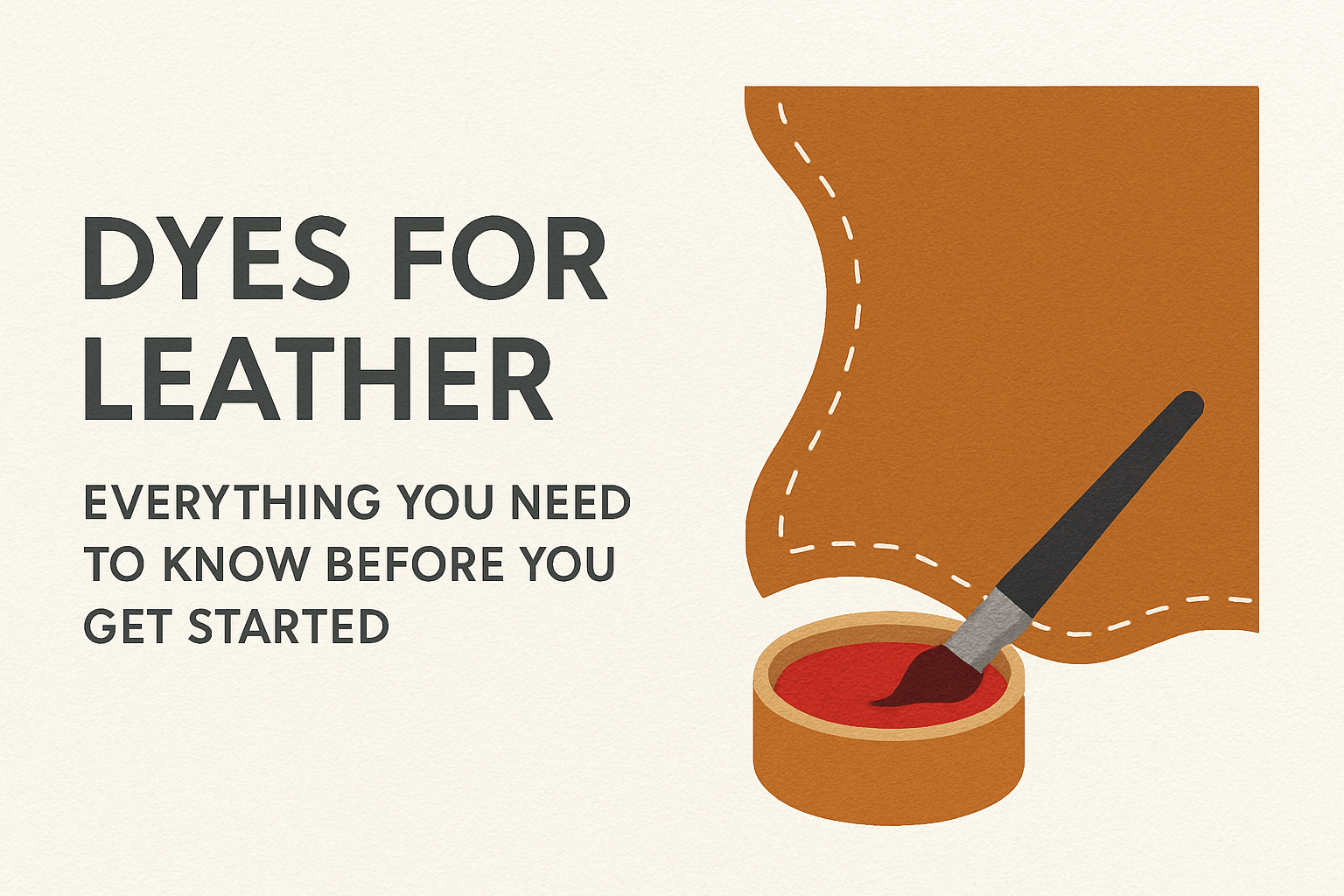Ever wondered how a plain leather hide is transformed into a vibrant, beautifully colored handbag, a classic brown jacket, or a rich blue car seat? The magic lies in the dyeing process, and at the heart of that process is the selection of the right colorant. Choosing the perfect dyes for leather is a critical step that defines the final product’s look, feel, and durability.
But with so many options available, where do you even begin? Don’t worry, we’re here to help. This guide will walk you through everything you need to know about dyes for leather, helping you make an informed decision for your next project. Let’s dive in!
What Exactly Are Dyes for Leather?
Unlike paints that sit on the surface, Dyes for leather are designed to penetrate the fibrous structure of the hide, forming a chemical bond with it. This results in a rich, deep color that doesn’t crack or peel and allows the natural beauty and grain of the leather to show through. The type of dye you use depends heavily on the type of leather you are working with and the final result you want to achieve.
The Main Types of Leather Dyes
The world of leather coloring is vast, but it’s primarily dominated by a few key players. Understanding the different leather dye colors and types is the first step to success.
Acid Dyes: These are a cornerstone of modern leather dyeing. Acid dyes are highly versatile and are known for producing brilliant, vibrant colors with good lightfastness. They are a type of
water-based leather dye, making them easy to work with and better for the environment. They have excellent affinity for chrome-tanned leather, which is the most common type used for fashion, upholstery, and footwear.
Direct Dyes: Direct dyes are another popular type of water based leather dye. They are known for their ability to produce deep, full shades, especially in darker colors like black and brown. They have a high affinity for both vegetable-tanned and chrome-tanned leathers and are often used for their good penetration and economical performance.
Natural Dyes for Leather. For centuries, all leather was colored using natural dyes for leather, derived from plants, minerals, and even insects. Common sources include tannins from quebracho and mimosa trees for browns, and logwood for blacks and purples. While they are an eco-friendly option, natural dyes for leather typically produce more muted, earthy tones and may offer less consistent results and lower fastness compared to modern synthetic dyes.
One of the most exciting parts of leatherwork is selecting the color. Modern synthetic dyes, like acid and direct dyes, offer an almost limitless spectrum of leather dye colors, from bright primary shades to deep, sophisticated tones.
It’s important to remember that the base color of the leather will affect the final shade. Dyeing a light tan hide will produce a much different result than dyeing a darker brown one. The key is to test your dye on a small, inconspicuous area first to ensure you achieve the desired color.
Choosing Your Perfect Leather Dye Colors
Water Based Leather Dye: The Modern Choice
Today, water based leather dye formulations (which include both acid and direct dyes) are the industry standard for most applications. Why?
• Eco-Friendly: They have lower VOCs (Volatile Organic Compounds) than older, solvent-based systems.
• Ease of Use: They are easy to mix and dilute with water, and cleanup is simple.
• Vibrant Colors: They can produce exceptionally bright and clear shades.
One thing to note is that a water based leather dye can sometimes “raise the grain” of the leather. This is a normal part of the process and can be easily managed by buffing the leather after it dries.
Key Factors to Consider Before You Start
Before you purchase your dyes for leather, ask yourself these questions:
• What type of leather am I dyeing? Is it chrome-tanned or vegetable-tanned? This will heavily influence your choice between dye types.
• What is my desired color? Do I need a bright, vibrant shade (perfect for acid dyes) or a deep, dark color (a strength of direct dyes)?
• What are the fastness requirements? Will the final product be exposed to a lot of sunlight or moisture? For high-performance needs, metal-complex acid dyes are often the best choice.
• What is my application method? Will you be spraying, brushing, or dipping the leather? The dye you choose should be suitable for your method.
Choosing the right dyes for leather is a blend of art and science. By understanding the key differences between dye types like acid, direct, and natural dyes, you can ensure your project has the beautiful, durable, and professional finish it deserves. The versatility of modern colorants, especially the wide range of leather dye colors available in water based leather dye systems, has opened up a world of creative possibilities.
If you have a project in mind and need help selecting the perfect dye, don’t hesitate to reach out. Our experts are always here to guide you to the perfect color solution.
